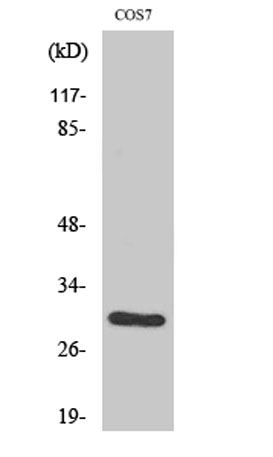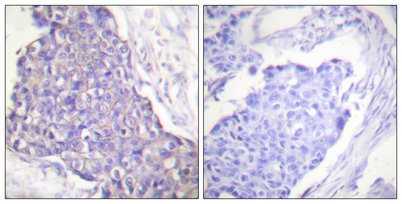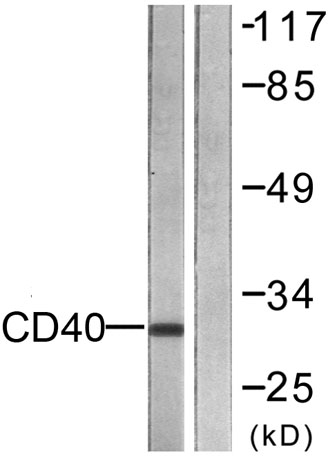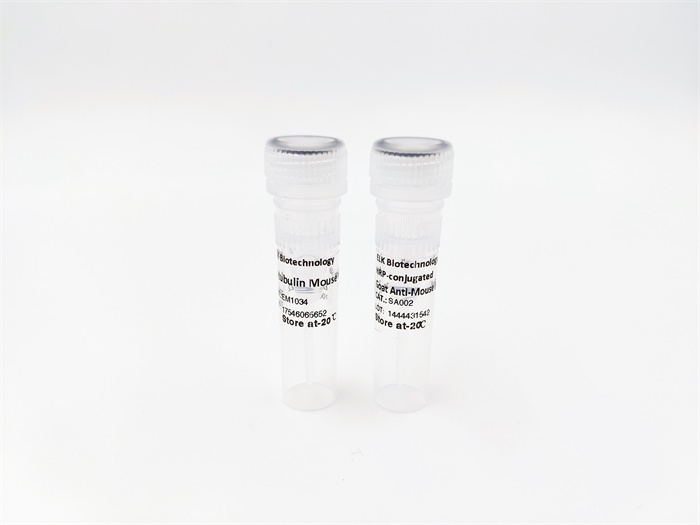








CD40 rabbit pAb
 One-click to copy product information
One-click to copy product information$148.00/50µL $248.00/100µL
| 50 µL | $148.00 |
| 100 µL | $248.00 |
Overview
| Product name: | CD40 rabbit pAb |
| Reactivity: | Human;Mouse;Monkey |
| Alternative Names: | CD40; TNFRSF5; Tumor necrosis factor receptor superfamily member 5; B-cell surface antigen CD40; Bp50; CD40L receptor; CDw40; CD antigen CD40 |
| Source: | Rabbit |
| Dilutions: | Western Blot: 1/500 - 1/2000. Immunohistochemistry: 1/100 - 1/300. ELISA: 1/10000. Not yet tested in other applications. |
| Immunogen: | The antiserum was produced against synthesized peptide derived from human CD40. AA range:228-277 |
| Storage: | -20°C/1 year |
| Clonality: | Polyclonal |
| Isotype: | IgG |
| Concentration: | 1 mg/ml |
| Observed Band: | 30kD |
| GeneID: | 958 |
| Human Swiss-Prot No: | P25942 |
| Cellular localization: | [Isoform I]: Cell membrane; Single-pass type I membrane protein.; [Isoform II]: Secreted. |
| Background: | This gene is a member of the TNF-receptor superfamily. The encoded protein is a receptor on antigen-presenting cells of the immune system and is essential for mediating a broad variety of immune and inflammatory responses including T cell-dependent immunoglobulin class switching, memory B cell development, and germinal center formation. AT-hook transcription factor AKNA is reported to coordinately regulate the expression of this receptor and its ligand, which may be important for homotypic cell interactions. Adaptor protein TNFR2 interacts with this receptor and serves as a mediator of the signal transduction. The interaction of this receptor and its ligand is found to be necessary for amyloid-beta-induced microglial activation, and thus is thought to be an early event in Alzheimer disease pathogenesis. Mutations affecting this gene are the cause of autosomal recessive hyper-IgM immunodeficiency type 3 (HIG |
-
 Western Blot analysis of various cells using CD40 Polyclonal Antibody
Western Blot analysis of various cells using CD40 Polyclonal Antibody -
 Immunohistochemistry analysis of paraffin-embedded human breast carcinoma tissue, using CD40 Antibody. The picture on the right is blocked with the synthesized peptide.
Immunohistochemistry analysis of paraffin-embedded human breast carcinoma tissue, using CD40 Antibody. The picture on the right is blocked with the synthesized peptide. -
 Western blot analysis of lysates from COS7 cells, using CD40 Antibody. The lane on the right is blocked with the synthesized peptide.
Western blot analysis of lysates from COS7 cells, using CD40 Antibody. The lane on the right is blocked with the synthesized peptide.

 Manual
Manual